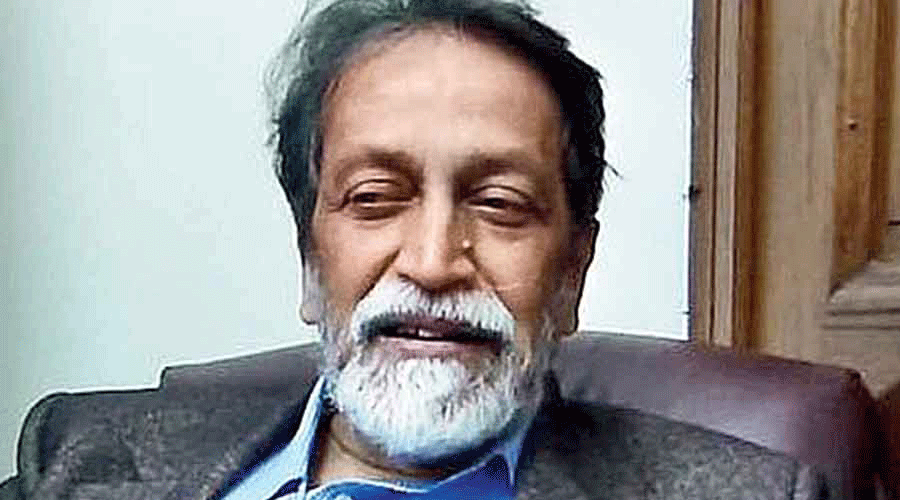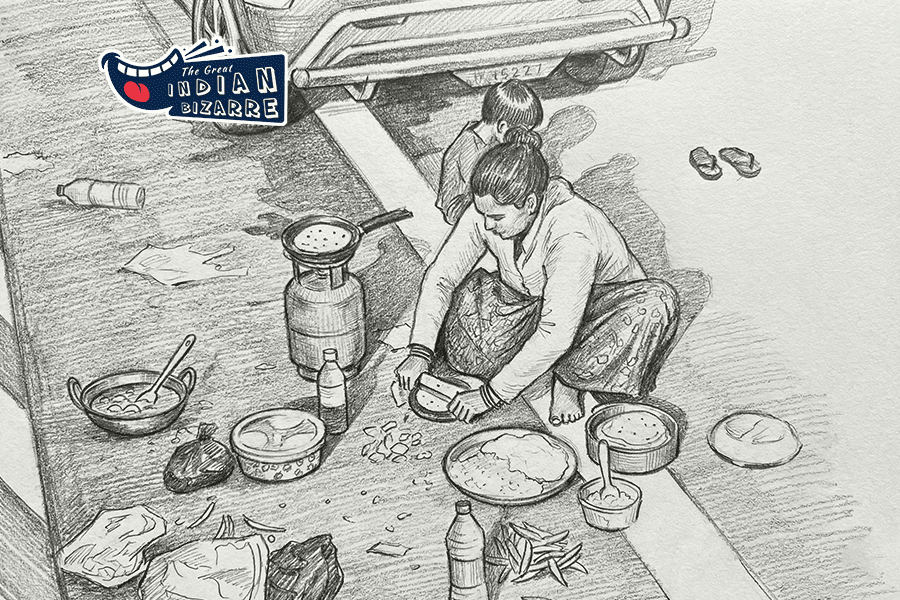Stopping the ascendancy of Hindutva will necessitate looking beyond neo-liberalism, with the broadest possible unity of non-BJP political parties around the twin agendas of restoration of democracy and relief for the people, eminent social scientist Prabhat Patnaik tells Subhoranjan Dasgupta, professor of human sciences in the second and concluding part of the interview.
Q: Hitler, by means fair or abrasively foul, blessed Germany with a sound war-dependent economy. He built his criminal autocracy on this questionable economic base. Here, however, there is no trace of any sound economy. On top of this economic malaise, we are encouraged to recite mantras and slogans at the top of our voice. The present dispensation seems to believe in at least one Marxist dictum — that religion is the opium of the masses. Has the present government realised the supreme importance of religiosity in a faith-scarred country like India?
Patnaik: There is a big difference between 1930s fascism and contemporary fascism. In that period, whether in Germany in 1933 or in Japan in 1931, armaments expenditure in preparation for war, which was financed by government borrowing (or fiscal deficit), increased the aggregate demand and hence employment, overcoming the effects of the Great Depression. In fact, there was a brief period in Germany when the effects of the Depression had been overcome but the horrors of the war had not yet visited the people, when the Nazi government acquired even greater popularity because of its economic measures.
But such a route is foreclosed for contemporary fascism. Aggregate demand can be expanded through government expenditure only if that expenditure is financed either by a fiscal deficit or by taxing the rich who save a good deal of their income; taxing the working people who spend the bulk of their income to finance government spending merely substitutes one kind of demand by another without causing any net expansion in demand.
But both, a fiscal deficit and higher taxation of the rich, are anathema for globalised finance, and since its writ must run against the nation-state, both are ruled out under contemporary fascism. Hence contemporary fascism must rely only on the generation of hatred and the spread of fear, rather than even the minimal positive secular achievement of 1930s fascism.
Q: A crime close to hypocrisy is duplicity, and here too the present regime excels. For instance, the Prime Minister told the three bishops who had gone to seek relief for the persecuted Stan Swamy that the matter was not in his hands, that he would not like to interfere in the work of autonomous institutions. But the same PMO is interfering blatantly in every possible way in every department. Examples of such calculated duplicity are many.
Patnaik: Duplicity is part of the propaganda drive for a fascist regime, an essential part of its jumla. Reliance on it is even greater in India because of the democratic shell of contemporary neo-fascism. This shell makes it obligatory for the rulers to present a benign appearance before the public even as the government they lead pursues a ruthless politics of repression and vendetta.
Q: What are then the hallmarks of Indian fascism? “Hypocrisy, religiosity, duplicity” could be the answer. In what ways does Indian fascism differ from similar efforts elsewhere? Should we limit it to the depredations of the Right wing ecosystem flourishing at present, or is it much more dangerous?
Patnaik: The duplicity and hypocrisy you mention are not specific to Indian fascism; it characterises all fascism. Intolerance and dogmatism, given a veneer to make these pass as “religiosity”, is the specific means in our context of “othering” the hapless minority group and generating hatred against it. In other contexts, the means have been race or ethnicity or some other characteristic.
But it is not just a matter of the Right-wing nature of the current dispensation; it is the pathology, the obsessive hatred and targeting of all those artists, intellectuals and social activists who happen to disagree with the worldview of the rulers, that is dangerous, because it is destructive of society. Hatred cannot be the binding thread for any society; and its promotion within a society destroys it for two quite distinct reasons.
One is obvious: the generation of inter-group conflict. The Third World is full of examples of so-called “failed States” with abysmal material achievements, and one important reason for this is the internecine conflicts within these societies, whose aggravation is usually the parting gift of colonialism to such societies. India had so far avoided this fate but now seems headed for it.
The second reason is that hatred directed against a minority group begins eventually to corrode the majority group itself, and hence what starts as an inter-group conflict gets translated over time into intra-group conflicts, so that the whole of society gets permeated by hostile atomisation.
Q: Every oppressive regime, fascist or not, brainwashes citizens. The BJP is no exception. How would you characterise its repeated forays into the realms of education and culture?
Patnaik: I mentioned earlier the alliance between neo-fascism and neo-liberalism. This fact is reflected in the current regime’s education policy. This policy wants to introduce in India the course contents and curricula that prevail in institutions like Oxford and Harvard, which entails the perpetuation of the intellectual hegemony of imperialism. For instance, an Indian student of development must know the impact of colonialism on the Indian economy, for which the student must be acquainted with the work of Dadabhai Naoroji and Romesh Chunder Dutt; but neither in Oxford nor in Harvard would any development course ever mention these names.
The education policy of the current regime, therefore, perpetuates the hegemony of imperialism in the realm of ideas, while throwing in a few obligatory references to the achievements of ancient India, some real and some utterly fanciful, in the realm of knowledge.
Even the distorted perspective of India’s history that it propagates is substantially congruent with colonial historiography.
Q: Who is the greatest symbol of this aggressive religious dispensation? I think the sadhu who gave an open cry to free “Devabhumi” India from the “unholy” Muslims and launch a genocide against them…. While he got off easily, we don’t know what will happen to Teesta Setalvad, Mohammed Zubair (recently granted bail by the Supreme Court) and others like them? They have been caught in a vicious circle of criminal cases.
Patnaik: We have discussed many aspects of the fascist regime, but what is most striking about any fascist regime is its pathology, generated by an obsessive fear that it will lose power. It is the fear of there being a “next government” that drives fascist regimes to otherwise inexplicable levels of vendetta and terrorisation. The less successful they are in dealing with the people’s material problems, the more afraid they become of losing power; and hence the level of repression increases. In particular cases, such as Mohammed Zubair, there may be judicial intervention that frees them from jail, but this tendency to put opponents in jail, far from disappearing, will only increase over time.
Q: How can this dispensation be shown the door? Something has to be done, perhaps something magical.
Patnaik: Getting rid of the ascendancy of Hindutva is not going to be easy. This particular government may get voted out, though that itself will be a massive task; but as long as the neo-liberal order continues, and hence the economic crisis it has unleashed persists, the Hindutva forces will have an enduring presence. Look at the United States: Donald Trump continues to remain a potent force there despite being voted out.
Even to vote them out, what is required is a unity of all anti-fascist forces. But to reduce their social and political weight, something much more is required: the conjuncture that produces their ascendancy has to be overcome, which means going beyond neo-liberalism through an agenda of relief for the people.
Since any significant relief for the people would be opposed by neo-liberalism, the adoption of such an agenda would amount ipso facto to looking beyond neo-liberalism. Thus, the broadest possible unity of political parties, around the twin agendas of restoration of democracy and relief for the people, is needed. This cannot, however, be merely a unity from the top; it will have to involve mass mobilisation, which is also necessary for bringing about the unity at the top.
The kisan movement was an excellent example of such mass mobilisation; similar movements have got to be built up, which alone can provide the foundation for a broad and effective political front.











